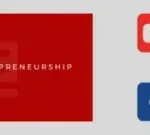Perplexity AI stands out as a challenger to Google in web search and OpenAI’s ChatGPT in the conversational AI space
As the artificial intelligence (AI) space is expanding at breakneck speed, competition for long-standing dominance of various platforms is also rising.
Perplexity AI, which is touted as a challenger for Google in the web search and ChatGPT in the AI chatbot space, recently received a new funding deal valued at $1 billion from Amazon’s Jeff Bezos.
The funding underscores the confidence in Perplexity AI’s potential as the new alternative. In January this year, Perplexity reached 10 million monthly active users and served over half a billion queries in 2023, its official website reported—making it an AI platform that can no longer be ignored.
Perplexity AI was launched in August 2022 by veteran app developers from OpenAI, Meta, Quora, and Databrick, namely, Aravind Srinivas, Denis Yarats, Johnny Ho, and Andy Konwinski. The aim from the beginning was to emerge as a preferred alternative to OpenAI’s ChatGPT as well as traditional search engines such as Google.
Earlier this month in an interview with The Verge, Perplexity AI’s CEO Srinivas said the company focuses on accuracy and neutrality. He added that the company is trying to be the “nerd in your classroom who’s just always right, but you don’t hate them for having a certain political value.”
Similar to ChatGPT, Perplexity AI has a conversational interface that provides answers to questions and prompts. But, according to developers, what sets it apart is the focus on providing accurate answers backed up with links citations and related topics.
In January, Srinivas highlighted how Perplexity saves time and energy and told Reuters: “Google is going to be viewed as something that’s legacy and old. If you can directly answer somebody’s question, nobody needs those 10 blue links.”
To generate the answers, Perplexity AI uses several large language models (LLMs) from OpenAI to Meta’s open-source model Llama. According to a Deepgram report, conversational interaction with the platform is possible because of natural language processing capabilities (NLP), which enables it “to comprehend queries as a human would.”
The Perplexity model is currently based on GPT-3.5. However, paid users, the ones using Perplexity Pro, can access GPT-4 and Claude 2, a generative AI tool by AI firm Anthropic. According to Perplexity AI’s website, GPT-4, from OpenAI is good for analytical tasks, while Claude 2 is better for writing as it has a longer context limit.
The developers call Perplexity AI an “answer engine” as it is a fusion of conversation chatbot and search engine. This is also one of the main ways it differs from ChatGPT. For instance, if you ask ChatGPT, “How to make Aglio e olio pasta”, it gives you two lines about what Aglio e olio is and then the recipe, with ingredients and steps.
But when Perplexity AI is asked the same thing, it first gives sources with links to recipes found online and then the steps. Citing the sources instantly reduces the user’s time and energy needed to double-check sources on a search engine such as Google. However, while ChatGPT is known for its conversation capabilities, Perplexity AI is mainly designed for searching information.
Perplexity is designed to answer a range of questions, from simple factual queries to open-ended questions. People can use it to generate emails, letters, poems, code, or even musical pieces. If you want a quick summary of an article or a webpage, Perplexity can do that and highlight the most important information.
To get specific and relevant answers, people can also upload files in plain text, code, or PDF format to enable Perplexity to analyse the context. It can also summarize PDFs, explain code, or translate files. Users can also upload images to identify an object or even get help from Perplexity to get descriptions for social media.
One of its other interesting features is Search Focus, wherein users can narrow down the sources for targeted results. For instance, users can choose to get results from only published academic papers or from Reddit discussions and opinions.
Although ChatGPT has been the most popular AI since it was rolled out in 2022, it hasn’t been able to cement its place as a reliable resource. In August 2023, in a study by Purdue University, researchers asked ChatGPT 517 questions. The findings showed that 52% of the AI chatbot’s responses contained inaccuracies and 77% were ‘verbose’.
In an interview with Decrypt in January, Srinivas said the backbone of Perplexity’s design is the question: “What if a product is built in a way where it’s always grounded in real facts, rather than making up things and saying whatever it wants?”
Although he stated that the aim is not to provide an alternative to ChatGPT, it seems like it could be one to dethrone it.
(With inputs from agencies)
This post was originally published on 3rd party site mentioned in the title of this site

